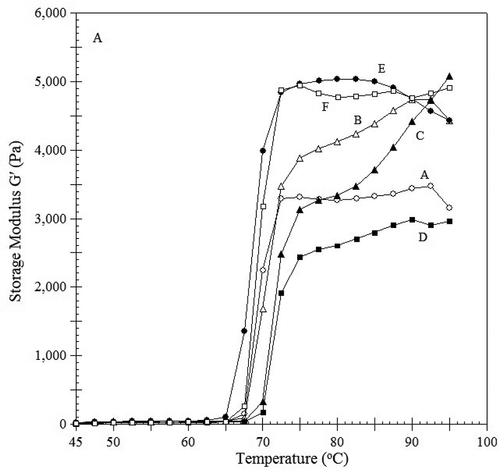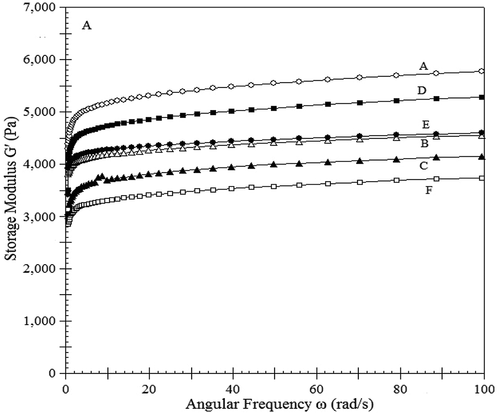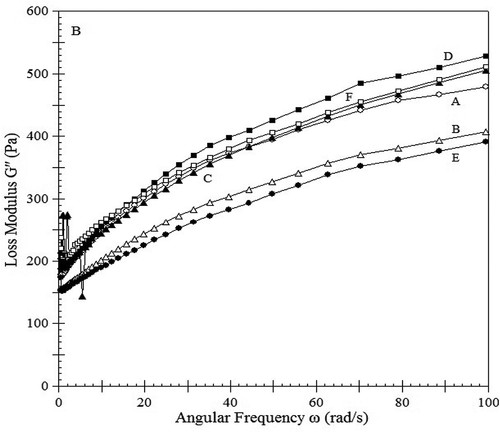Figures & data
Table 1. Degree of cross-linking (DC), amylose content (%), swelling power (g/g), and solubility (%) of cross-linked starches.
Table 2a. Pasting properties of cross-linked starches from different cultivars.
Table 2b. Pasting properties of native starches from different cultivarsb.
Figure 1. Pasting properties of cross-linked starches from different pearl millet cultivars.
Cultivars are denoted by: A: HC-10; B: HHB-67; C: HHB-223; D: HHB-226; E: W-445; F: GHB-732.
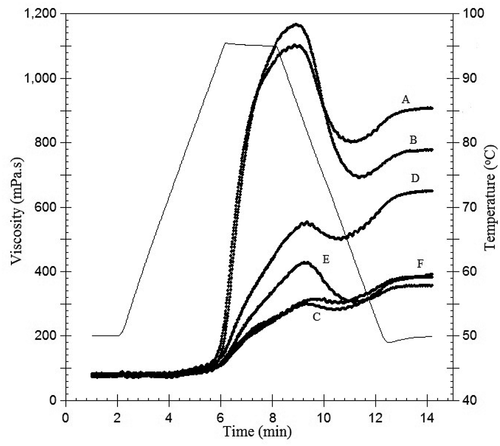
Table 3. Rheological properties of cross-linked starches from different cultivars during heating.
Table 4a. Rheological properties of native starches from different cultivars during frequency sweep.
Table 4b. Rheological properties of cross-linked starches from different cultivars during frequency sweep.
Table 5. Steady shear properties of cross-linked starches from different cultivars fitted with Herschel-Bulkley model.
Figure 2b. Changes in G” of cross-linked starches from different cultivars during heating.
Cultivars are denoted by: A: HC-10; B: HHB-67; C: HHB-223;D: HHB-226; E: W-445; F: GHB-732.
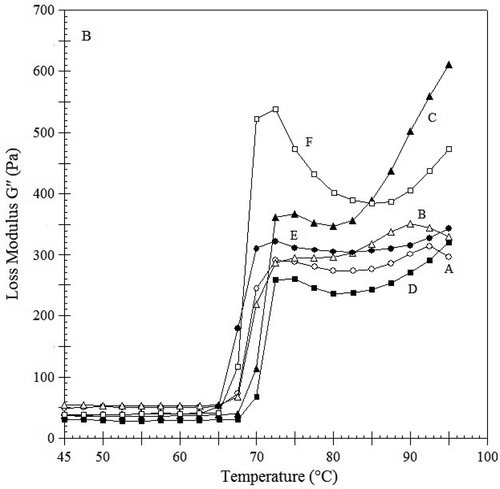
Figure 3c. Angular frequency dependence of tanδ at 25°C for cross-linked starches.
Cultivars are denoted by: A: HC-10; B: HHB-67; C: HHB-223; D: HHB-226; E: W-445; F: GHB-732.
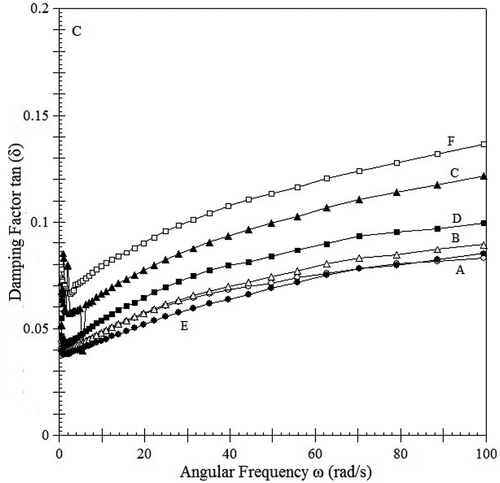
Figure 4. Steady shear properties of cross-linked starches from different pearl millet cultivars.
Cultivars are denoted by: A: HC-10; B: HHB-67; C: HHB-223; D: HHB-226; E: W-445; F: GHB-732.
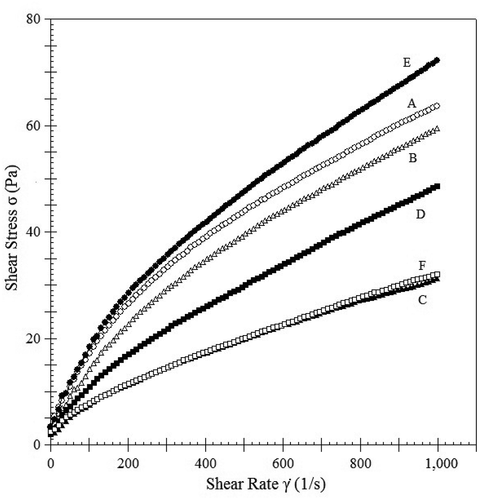
Figure 5. Morphological properties of cross-linked starches from different pearl millet cultivars.
Cultivars are denoted by: A: HC-10; B: HHB-67; C: HHB-223; D: HHB-226; E: W-445; F: GHB-732.

Table 6. In vitro digestibility of cross-linked starch from different cultivars.

